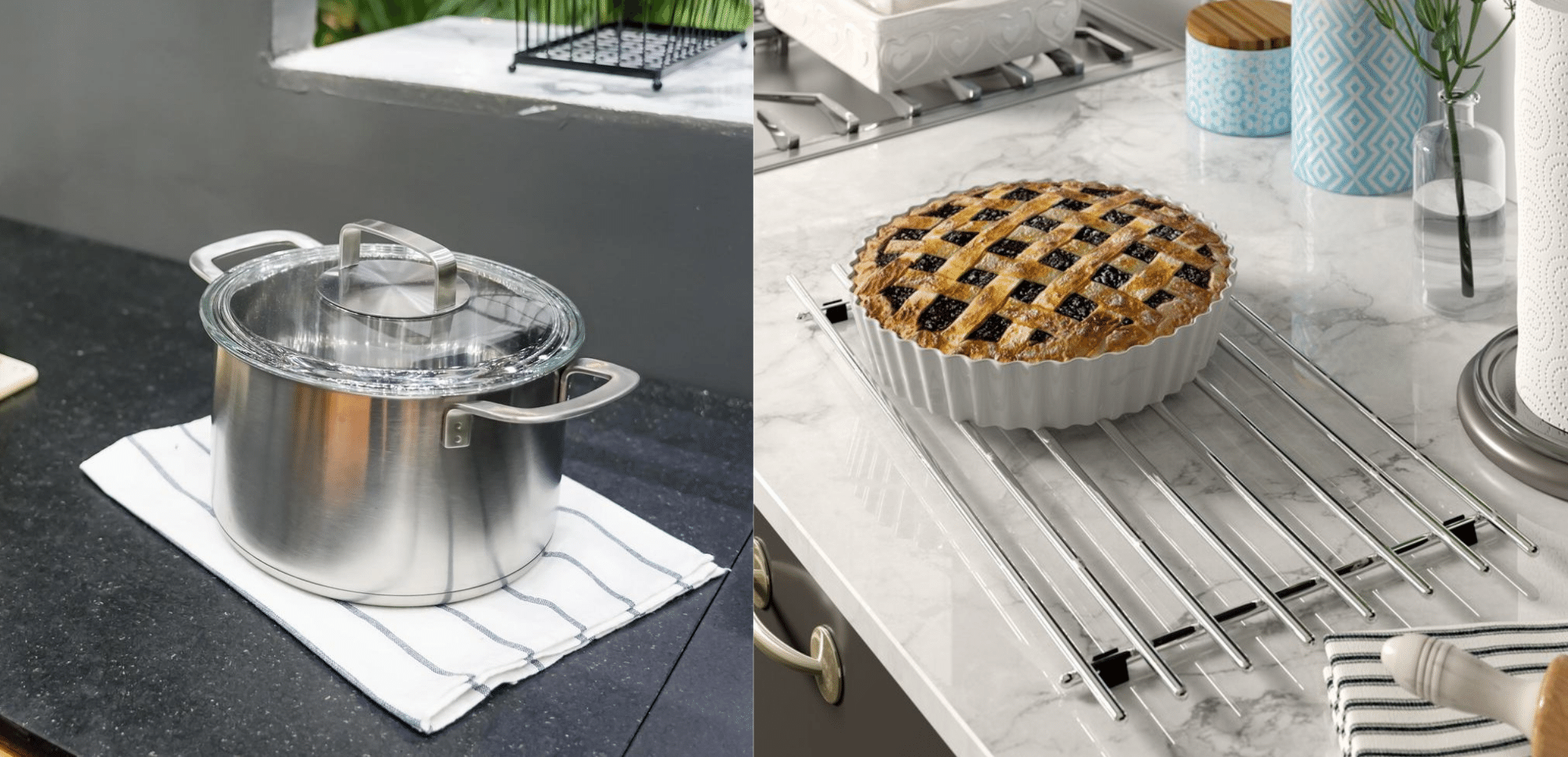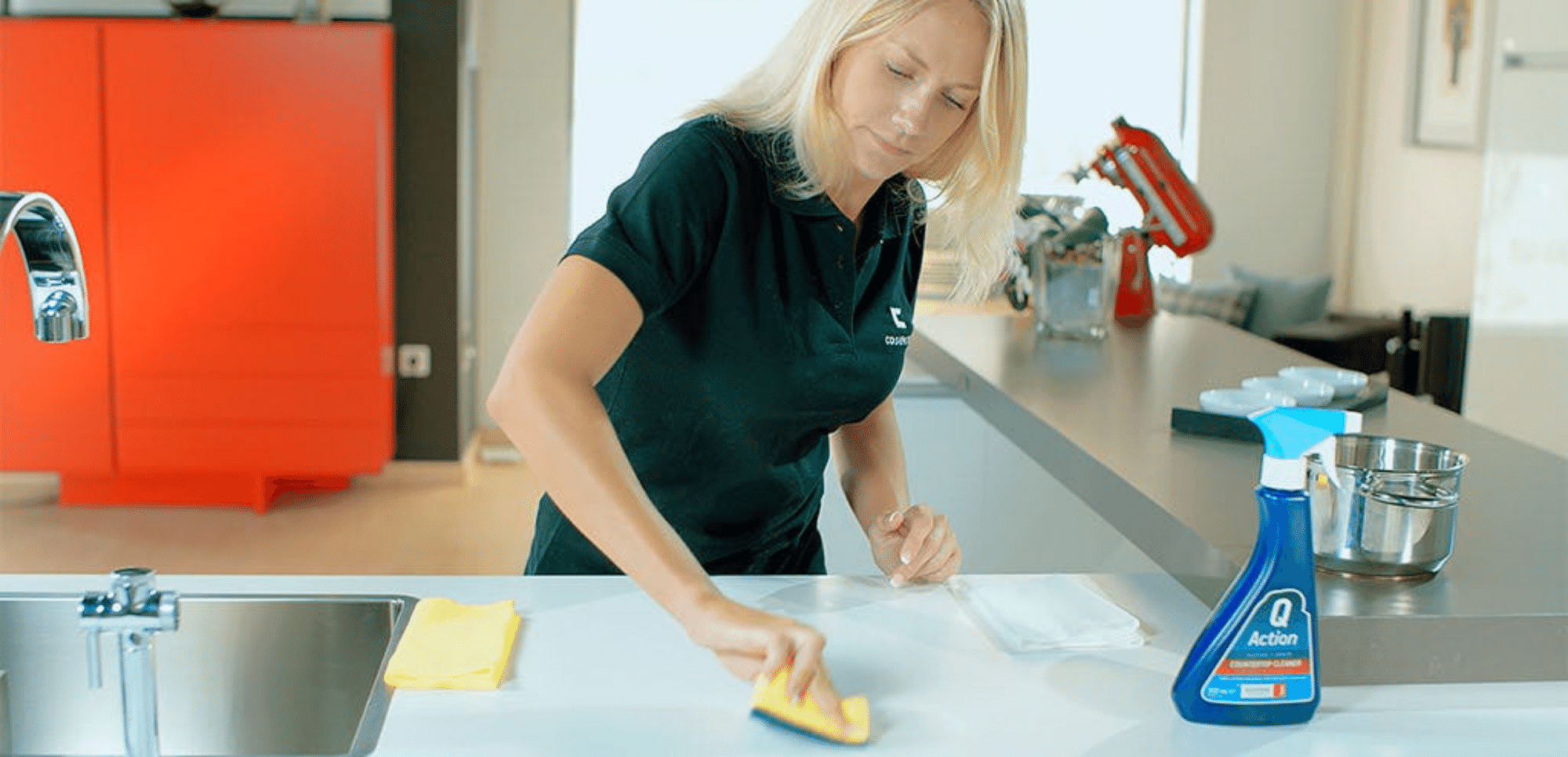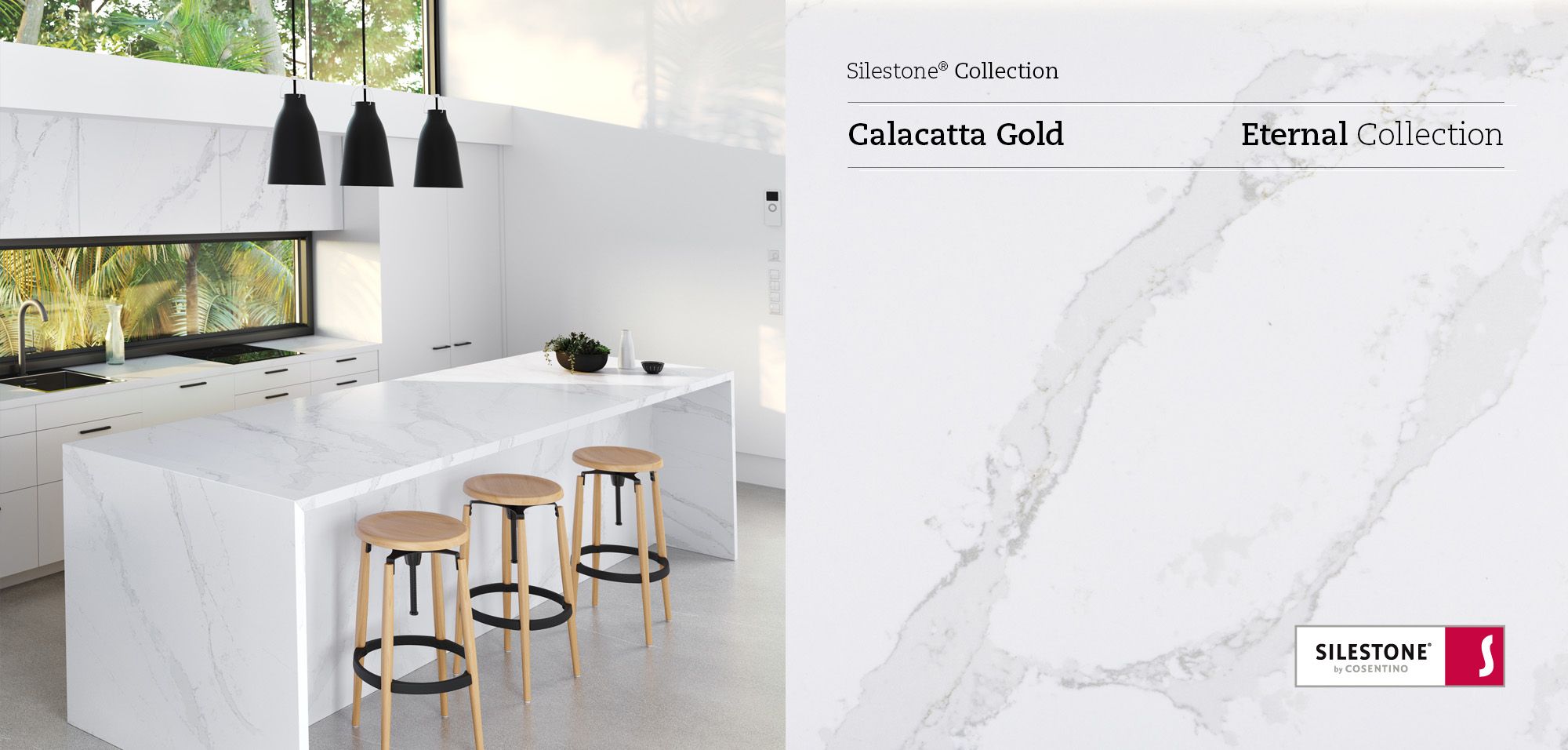
Blog Content Updated: April 7th 2021 by Sam Schaffer
Kitchen and bathroom remodeling projects are at the top many people’s lists of home renovation projects. Countertops often become a major decision because it’s one of the first things people see when they enter a room. The Right Countertop can enhance your space, whereas the Wrong Countertop will make your space feel crowded.
As you investigate different Stone Countertop options, you’ll learn that Granite and Silestone — a brand of quartz countertops — are popular choices
While some articles and videos might give you a brief overview of the Silestone vs Granite debate, most don’t dig into the details. You might ask yourself, “What’s the difference?” Keep reading for a quick guide on some of the differences between the two countertop materials.
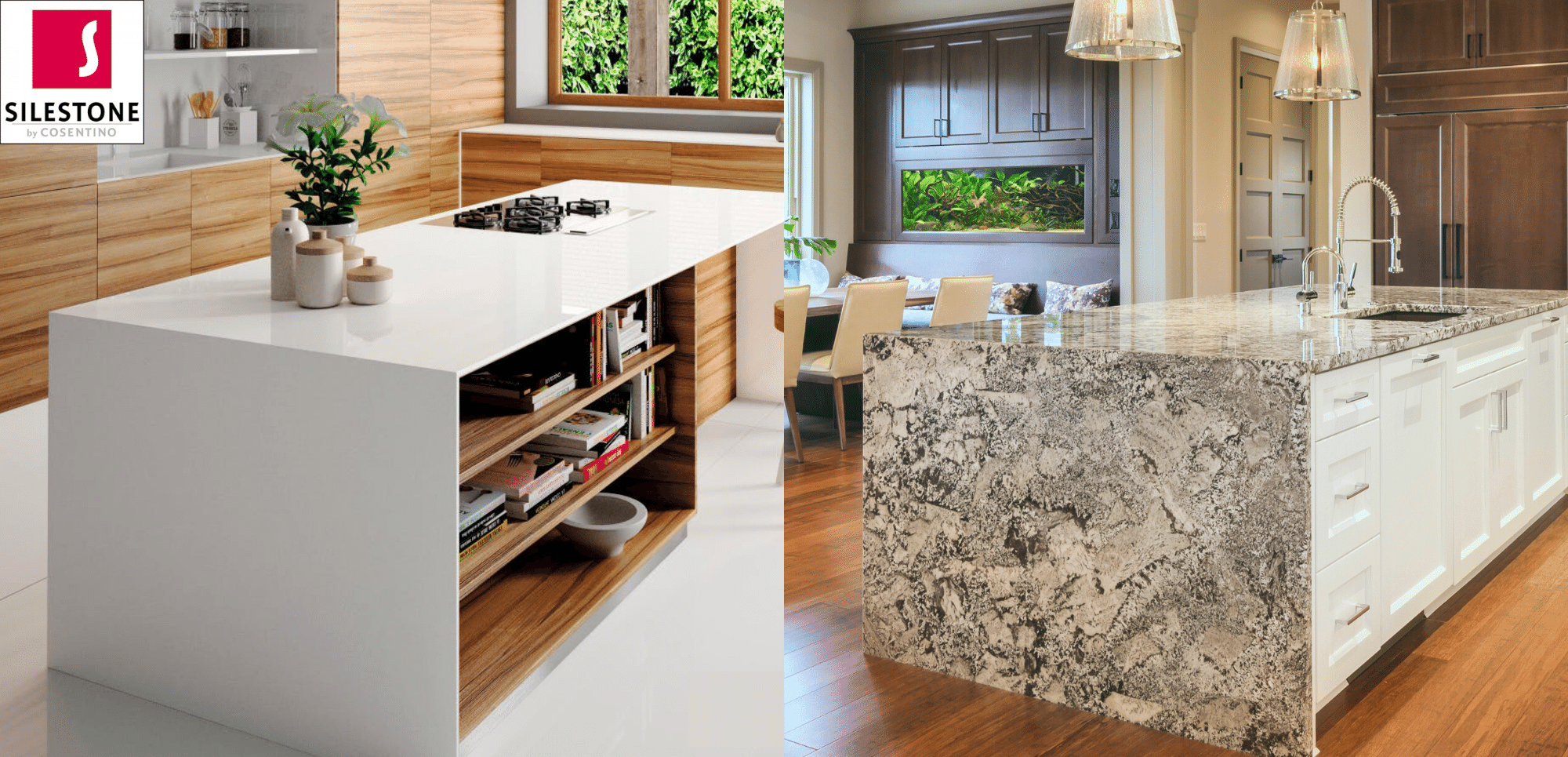
Man-Made vs Natural
The first major difference is that Silestone Quartz and most other quartz countertops are man-made. They combine actual quartz and resin that binds the quartz together. The quartz/resin combo gets formed into custom slabs that fit your kitchen or bathroom.
Granite is a natural stone. Companies cut huge granite blocks out of quarries around the world. Depending on demand, the block might stay in-country or get transported across an ocean.
The blocks get sliced into smaller slabs that end up in showrooms. Customers pick out the slabs they like. Those slabs then get cut down again to fit the customer’s cabinets.
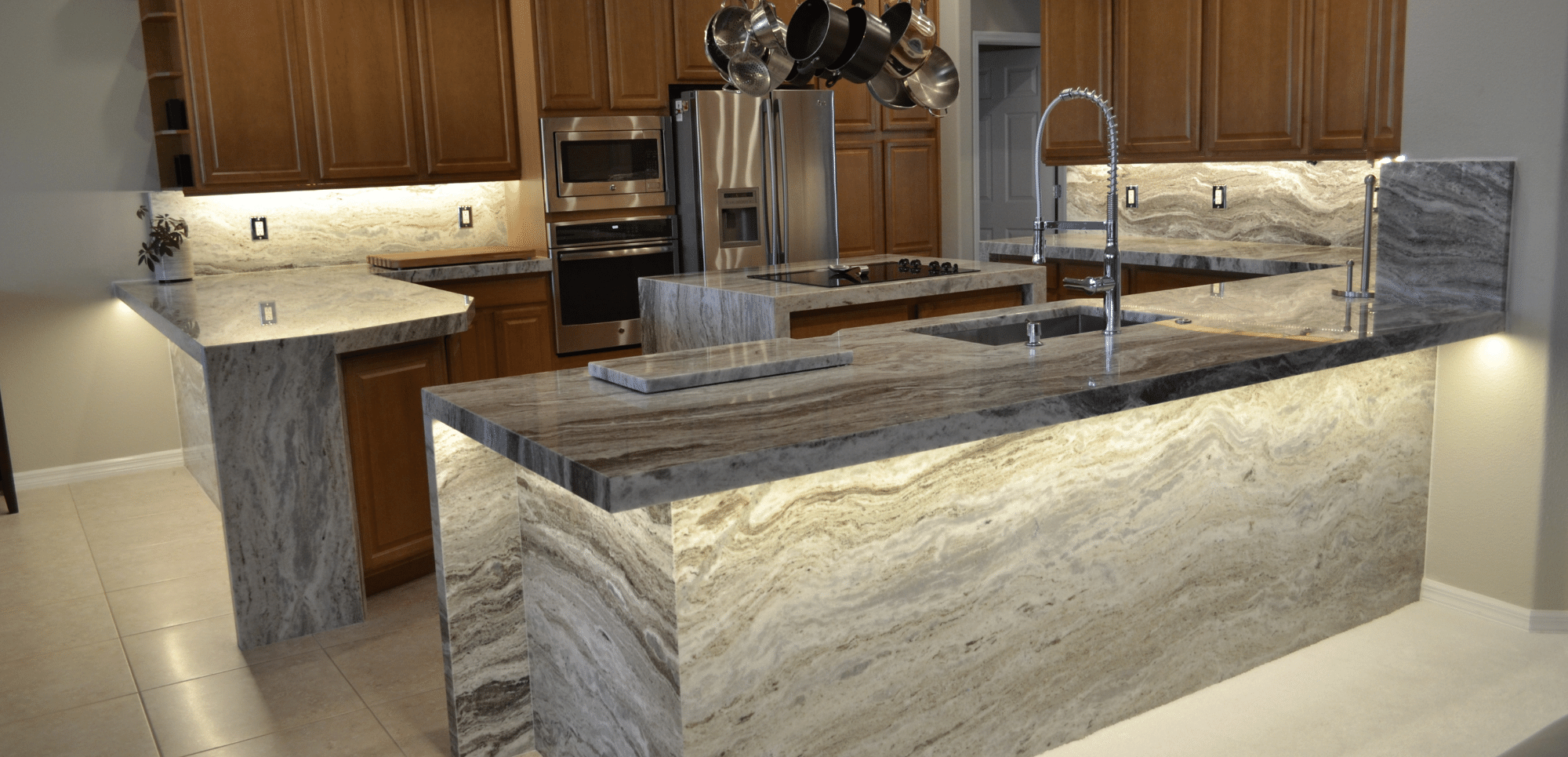
Density
Silestone Quartz and granite are both dense & heavy. So heavy, in fact, that most cabinets require that you get extra support installed in the cabinet before the countertop goes on.
While granite’s density makes it heavy, Silestone Quartz actually weighs more for a comparably-sized countertop. In most cases, a specialist must examine your home to ensure the floors can support the weight of either material. One quartz slab
Heat Resistance
Kitchen countertops face more heat exposure than almost any other surfaces in your home. Between the stove, hot pots or pans, it’s almost inevitable that you’ll put something hot down on them.
Granite has a degree of heat resistance. While you shouldn’t make a habit of setting hot pots and pans on a granite countertop, the occasional hot contact shouldn’t hurt your counter. Over time, continuous heat exposure to a section of your countertop can actually weaken the integrity of the stone.
Silestone Quartz can tolerate some heat, but ultimately it is recommended to use a Trivet or cloth towel in between your hot pans and dishes coming straight out the oven and your countertops.
Maintenance
Silestone quartz vs Granite take two, very different, maintenance approaches.
Granite requires daily cleaning & maintenance. For best results, though, you need a cleaner designed for stone. You can also make a DIY stone cleaner that uses 1 part rubbing alcohol and 3 parts liquid soap mixed in warm water. Granite countertops get a sealant prior to installation. This helps prevent bacteria growth in stone’s small fissures. You must reseal the granite periodically. Aim for once a year or twice yearly if your kitchen is a high traffic area.
Silestone quartz countertops call for a much less rigorous maintenance routine. Silestone quartz isn’t porous the way granite is, so you get a pass on the annual resealing job that comes with maintaining granite countertops. That also makes Silestone quartz largely immune to any kind of lingering bacterial growth, as there is no opportunity for bacteria to be absorbed into the countertops. The non-porous nature of quartz makes it a suitable kitchen worktop for professional and novice chefs alike.
You should wipe the counter down on a regular basis as a basic sanitation measure. You can use mild liquid dish soap and a wet cloth for basic cleaning. Try a glass cleaner without Vinegar and a sponge for tougher cleaning jobs.
Appearance
Both granite and Silestone quartz offer a wide variety of colors and patterns. Quartz does offer some advantages on both fronts.
On the whole, granite only comes in natural colors. Since quartz countertops are somewhat artificial, you can choose from a wider assortment of colors. One of the things that people like about granite is the patterns that turn up in the stone. Unfortunately, you can’t predict those patterns. The warehouse may or may not have granite with a pattern you like.
Quartz countertops deliver a very predictable pattern. If you want an entire kitchen with the same pattern, you can get the counters made that way. With Quartz, you can also get much brighter whiter white countertop colors that look like Marble, but are much more durable.
Having Consistent Quartz Slabs and Countertops removes the element of uncertainty from the process. On the other hand, there’s no contest if you prefer the look and feel of natural stone. Regardless of the uncertainty, you’ll almost certainly choose a granite countertop.
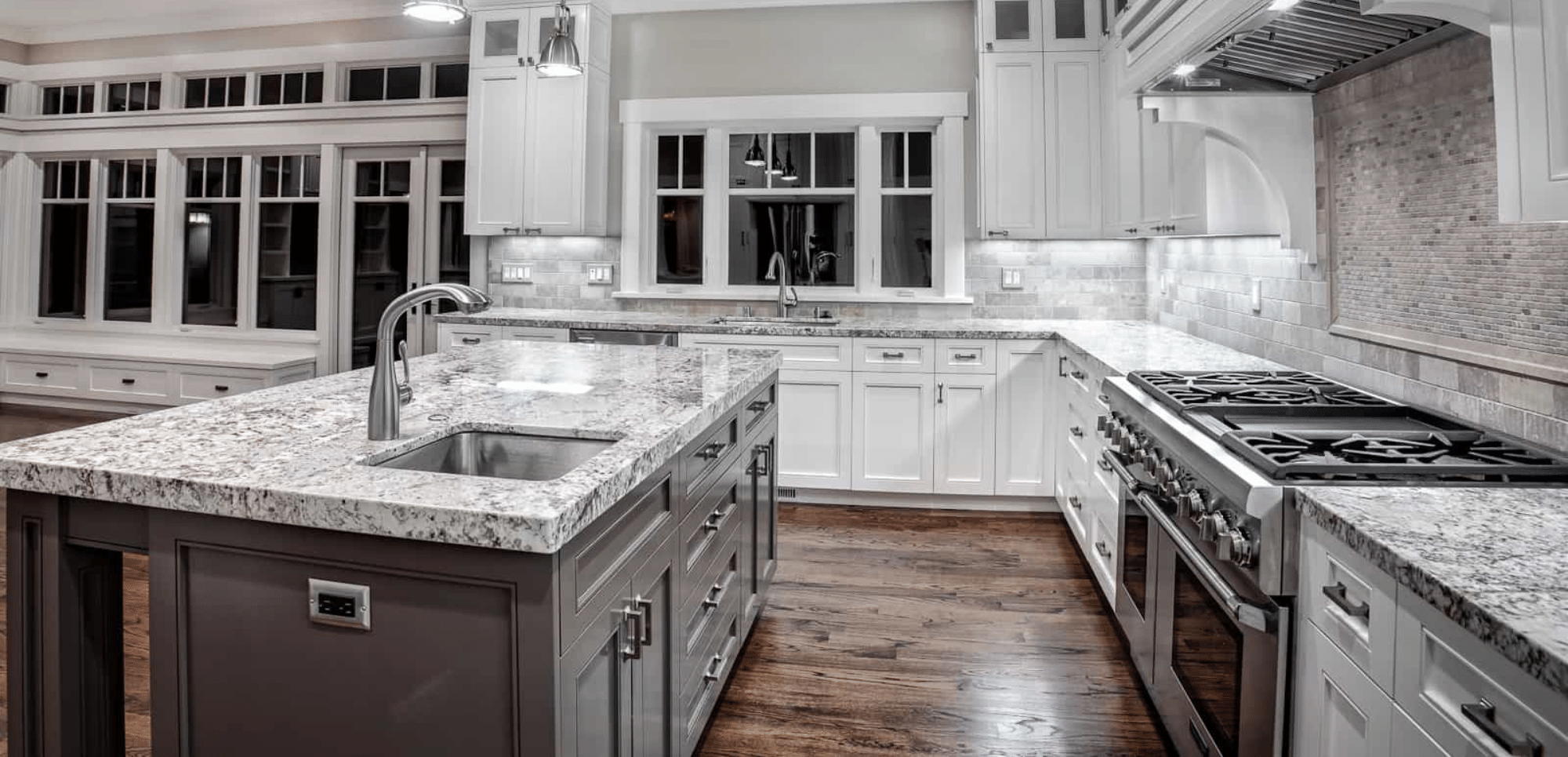
Durability
In terms of Durability, SIlestone Quartz and Granite Countertops differ. Quartz Countertops, being the more dense of the two is the more durable stone, in terms of chipping, cracking, & scratching.
Whereas Granite countertops can be prone to chipping along the inside lip of your sink, with the accidental bump of a pot or pan. With some Granite, even a mug falling from an upper cabinet can potentially chip your countertops.
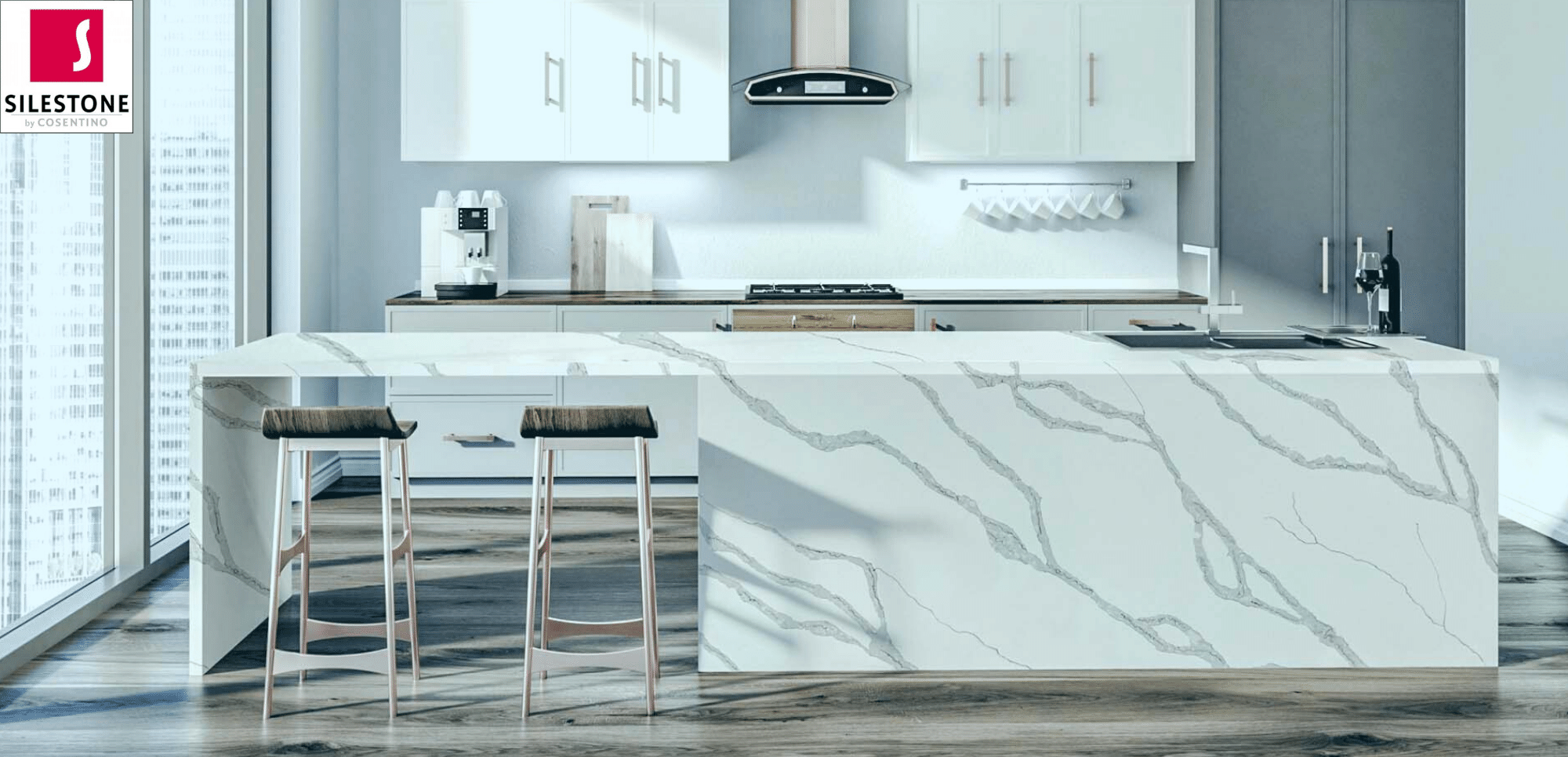
Cost
No one enjoys overpaying for any product or service. In terms of pure cost, granite has a slight advantage. The average cost of a granite countertop with installation can range anywhere from $3,500 to $10,000 The average cost of a Silestone Quartz countertop with installation works out to $3500 to $10,000. Both products are comparable in pricing, but project specific details can drive the cost of your project up.
It’s important to remember that your own project might fall outside of these general parameters. A small bathroom vanity will cost a lot less. An oversized kitchen will cost more.
The quality of the granite can also affect the price. While Silestone Quartz generally costs more than low-end granite, high-end granite generally costs a lot more than a base level quartz countertop.
Parting Thoughts on Silestone Quartz vs Granite
When it comes to Silestone Quartz vs granite, you get a lot of differences.
On the potential downside, Silestone Quartz is man-made, and may cost more. However, Granite requires more maintenance and comes in few colors.
On the upside, Granite is extremely heat resistant. Silestone Quartz won’t harbor bacteria underneath the surface from everyday bacteria.
Both Silestone Quartz and Granite offer homeowners beautiful, durable countertop options. As a homeowner, however, you should weigh the pros and cons of each material.
International Granite & Stone specializes in granite and quartz countertops for the Tampa Bay Area. For more information about our countertops or in-home consultations, please contact us today.

